Proposal to Upgrade the Walk Signs in San Francisco, CA
We learn to walk. There is no innate mechanism that percolates upward as we develop that enables stance and gait. Learning is the result of observation and experimentation. Consequently one can observe vast variances in stance and gait patterns. These variances even make it into our social infrastructure. In San Francisco, CA one example of this is our “WALK” signs. As this icon is omnipresent, it continually influences our idea of how we should perambulate.
Pedestrian fatalities are a significant issue in San Francisco. One (of several) factors for this is that pedestrians are looking down, either at their phones or their feet. The San Francisco “WALK” sign in the icon below normalizes that style of gait. The visual situational awareness presented by that icon is minimal, not reinforcing the protective benefits of looking around. From a safety perspective, it illustrates the opposite of what one would want to communicate with pedestrians.
This is a more subtle, but additionally valid issue, which is that what is demonstrated by the icon is marginally physiologically functional gait. Subliminally reinforcing this pattern of gait can insinuate a subtle but incessant negative influence on one’s perceptions of “normal” body structure dynamics, exerting negative pressure on health and well-being at the community level. Changing this icon to an example of healthier gait may well have significant preventative health benefits.
If the icons are replaced when the traffic system at an intersection is upgraded, substituting these icons with a more physiologically appropriate one as illustrated in the UK, German and Turkish pictures below would logically exert a positive influence on our common well-being at minimal or no additional cost. It is an ambition of this writer to present to the SAN FRANCISCO MUNICIPAL TRANSPORTATION AGENCY (SFMTA) a proposal to replace the “WALK” signage in San Francisco for a more “gait appropriate” version. However, it is something of a conundrum for him as to how to proceed. Assistance with this issue is greatly appreciated. There are no studies this writer is aware of on this subject that would bolster this position, but there are also (probably) minimal costs associated with the decision to change this over time.
You can contact me by email if you have thoughts on this subject:
BRIANESTY.COM
The pictures below demonstrate how the issue of indicating ‘OK to walk” is handled in SF, and in other cities.
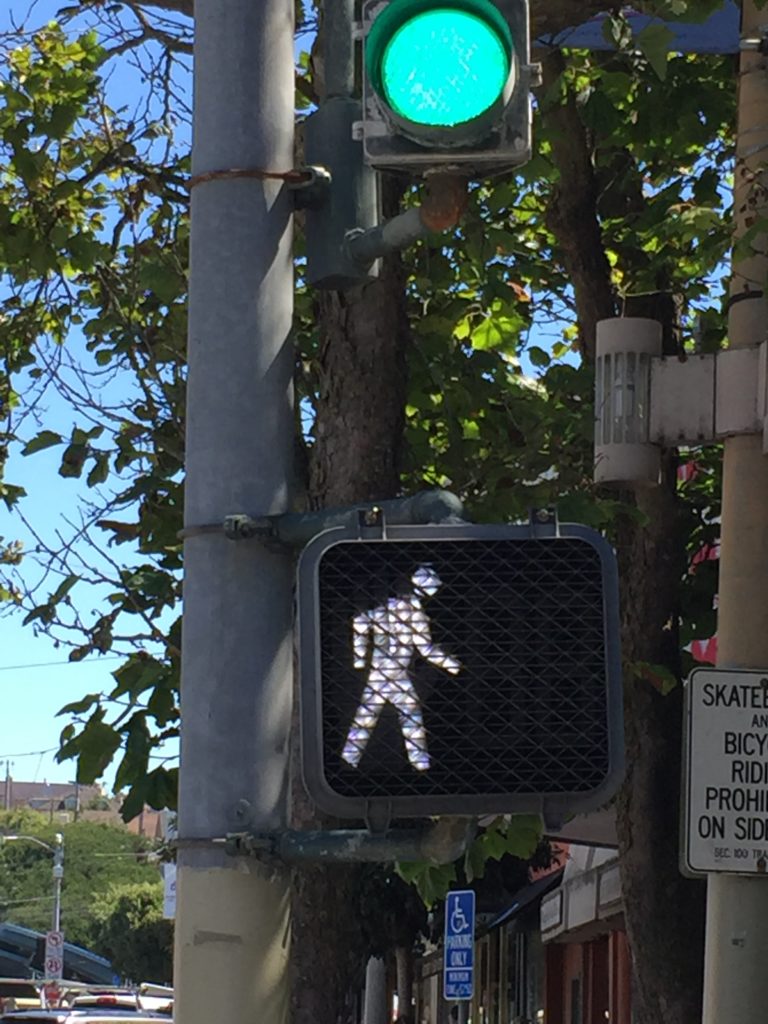
NOTE NO FEET AND FORWARD POSTURE
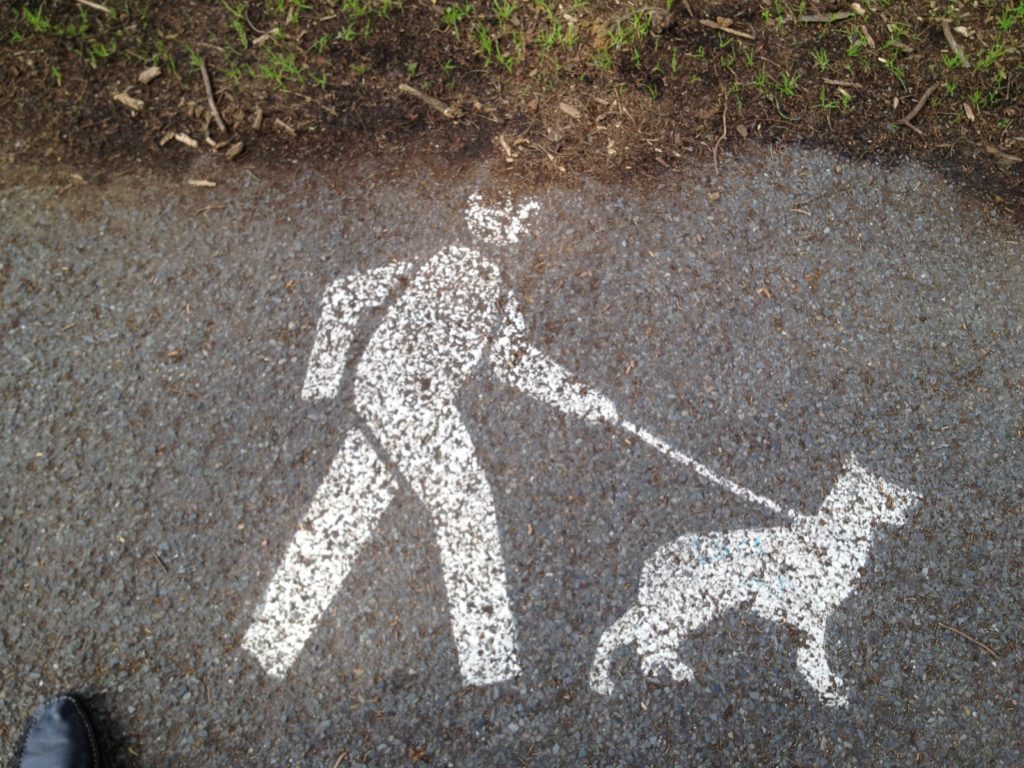
The Dog’s Postural Dynamics are Excellent

This one is closer to optimized gait as presented on this website, but the anterior leg is over-extended, lending gait to excessive heel strike.
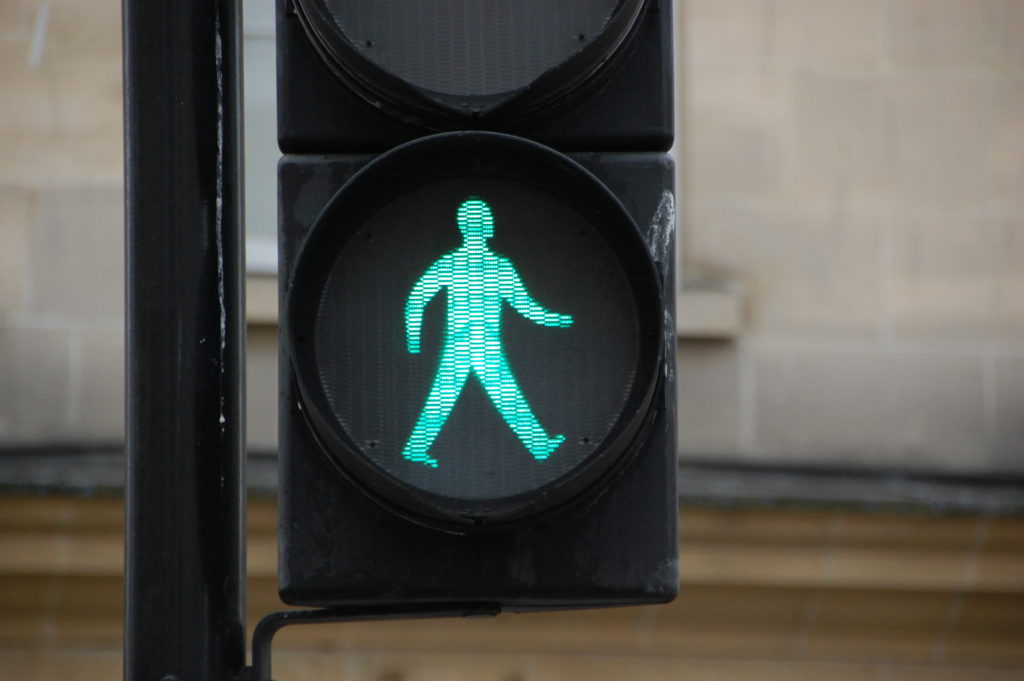
This one is closer to optimized gait as presented on this website. Body mass is forward in the gait cycle, but not enough to minimize heel strike.
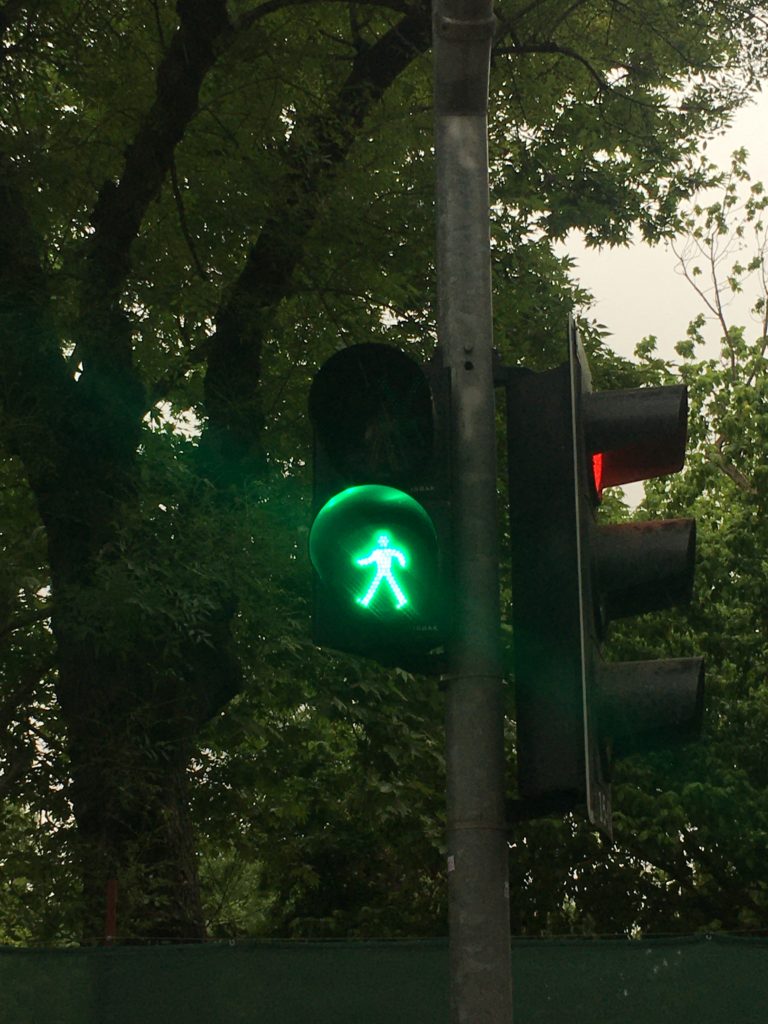
This one is closer to optimized gait as presented on this website. The anterior leg is a bit hyperextended, but it does indicate gait initiated by pushing forward with the big toe.
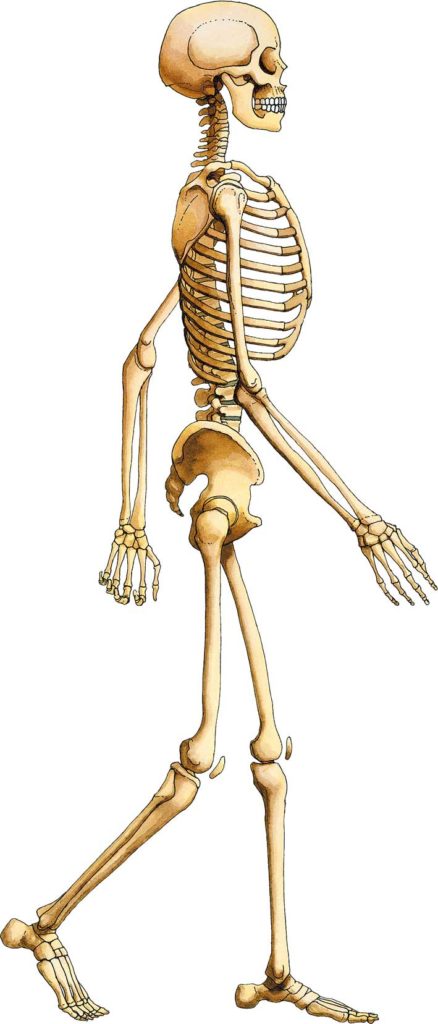
If one searches for information on the parameters of optimal gait one quickly discovers conflicting information. This is because gait is learned, and studying “normal” gait is influenced by both our culture and parents. Most US studies of gait illustrate a falling forward posture, which is suboptimal. The section of this website on the LOCOMOTIVE CORE attempts to define the phases of optimal gait based on the premise that our bodies’ anatomical center of gravity should not veer far from our center of mass. Moving in this way minimizes the energy expended and maximizes the range of motion potentials. The image at right illustrates the basic principles.
META READING
Discussion of projects relating to optimizing Stance and Gait
TRAINING AND RESEARCH INNOVATIONS
An overview of foot structural and functional issues and means to optimize how we use our feet:
FEET
An overview of the core physiological structure and functions of which feet are an essential attribute:
LOCOMOTIVE CORE
and a discussion of human neurophysiology dissected by physiology:
THE FOUR CORES